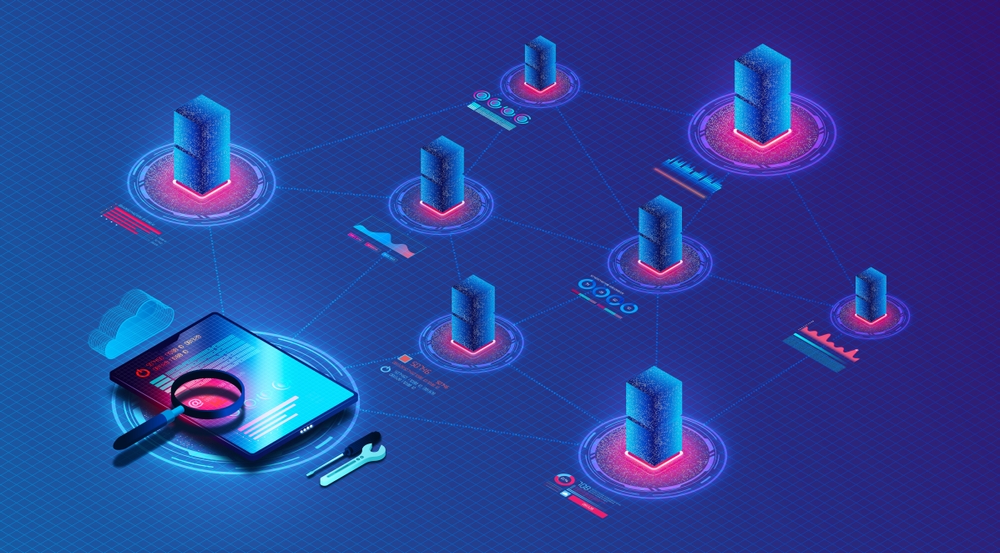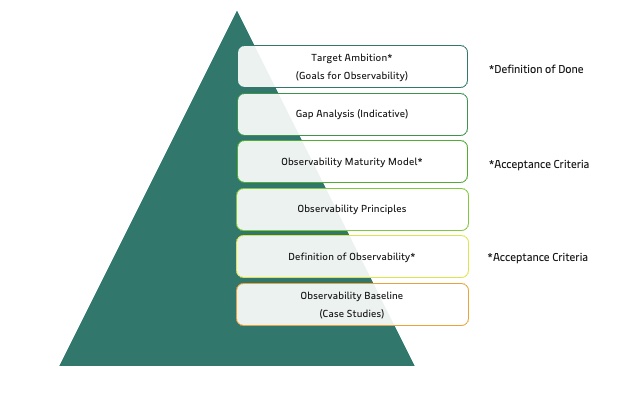Assignment
The client for this assignment was a multinational operator of marine container terminals who needed to gain a better insight into the health of the IT and OT systems upon which their terminal operations are entirely dependent. They wished to understand how Observability could help them improve the performance of their IT systems and, thus, their terminal operations. They also wished to understand how other similar companies were applying Observability to their businesses.
A small team from Endava, including Robert Howe as lead consultant, executed a short project to define an Observability Strategy in six steps with three deliverables. Concurrently, we gathered and reviewed case studies on Observability while also establishing a definition of Observability related to the customer’s needs. Building on this, we established a series of Observability principles and defined an Observability Maturity Model. Finally, we proposed a Target Ambition for Observability and performed a first-order assessment of the gap between the customer’s current Observability capability and the target ambition.


Observability
According to TechTarget, “Observability is an element in control theory, which says that the internal states of IT systems can be deduced from the relationship between their inputs and outputs. Thus, it is also often described as a top-down assessment. The challenge of observability lies less in deriving the internal state from observations than in collecting the right observations.”
In practice, state of art Observability depends almost entirely on collecting data from IT systems metrics, logs and traces. While this is necessary, it was deemed not to provide a level of insight sufficient to meet the needs of the customer. The customer had a range of stakeholders for Observability insights, from the CIO through to Terminal Leadership, Major Incident Teams, Local IT and Operations management and centralised Support Teams. Observability of both IT systems and Terminal Health and Operations was required, and each stakeholder needed a different level of insight.
Maturity Model
It was also determined that the value of the Observability insights depended on two other major factors: the quality of the measurements from which the insights were generated and the temporality of those measurements. In other words, noisy data would lead to noisy, poor-value insights. Measurements also needed to provide insight into what was happening, what had happened, causality and, ultimately, forecasts of what would happen.
We developed an Observability Strategy based on a Maturity Model that defined each degree of Observability: Insight, Quality and Temporality, and linked them together to provide a common, scalable framework that enabled the customer to determine and communicate their approach to increasing the Observability of their IT systems. We assessed their current situation in terms of the model and proposed a roadmap for developing the Observability capability.
The customer accepted our Observability Strategy and is currently in the process of deploying it across their organisation.
“At first glance observability might feel simple and well-understood in the industry. However, once you get into details and run proper research you’ll find the complexity of the topic. Robert led the engagement methodically, pealing observability complexity back into several abstraction layers, which were not only easy to understand and explain, but also made observability relevant across the entire business not only IT. A journey from nuts and bolts to how technology can enable business performance observation. Enjoyed seeing you in action. Regards, Bogdan”
